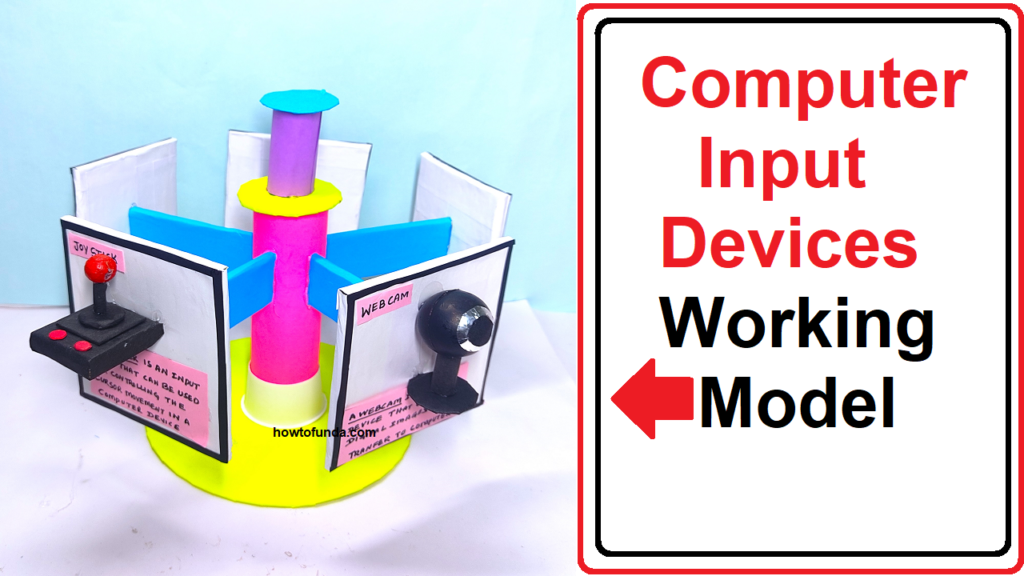Introduction:
Computer input devices are hardware components that allow users to interact with digital systems by providing data and commands to the computer.
These devices serve as the bridge between human users and the computational capabilities of a computer.
From typing text to moving a cursor, input devices play a crucial role in enabling users to communicate with and control the computer.
Types of Computer Input Devices:
- Keyboard:
- The keyboard is one of the most fundamental input devices. It consists of a set of keys, each representing a specific character, number, symbol, or function. Keyboards can be physical or virtual (software-based) and are used for tasks such as typing documents, entering commands, and navigating user interfaces.
- Mouse:
- A mouse is a pointing device that allows users to control the position of a cursor on the screen. It typically has two or more buttons, which can be clicked to perform actions. The mouse is essential for tasks like selecting, clicking, dragging, and dropping objects in graphical user interfaces.
- Touchpad and Trackball:
- Touchpads are flat, touch-sensitive surfaces that serve as an alternative to a mouse. They are commonly found on laptops and some desktop keyboards. Trackballs are stationary pointing devices that use a rolling ball to control the cursor’s movement.
- Graphics Tablet:
- Also known as a drawing tablet, a graphics tablet is used by artists and designers for precise digital drawing and graphic editing. It typically includes a stylus or digital pen that allows for precise input.
- Scanner:
- A scanner converts physical documents, images, or objects into digital form. It captures an image of the item and converts it into a format that can be stored and manipulated on a computer.
- Microphone:
- A microphone is an audio input device that converts sound waves into electrical signals. It is used for tasks like voice recording, video conferencing, and speech recognition.
- Webcam:
- A webcam captures video and sometimes audio, allowing users to participate in video calls, record videos, and engage in virtual meetings.
- Joystick and Gamepad:
- These devices are primarily used for gaming. Joysticks allow for precise control of movement, while gamepads offer a combination of buttons, triggers, and directional controls for gaming interactions.
- Barcode Reader and QR Code Scanner:
- These devices read codes from physical objects, providing a quick and accurate way to input data, often used in retail and inventory management.
- Biometric Devices:
- These devices use unique biological features such as fingerprints, facial features, or iris patterns for authentication and identification. They are used in security systems and access control.
Importance of Input Devices:
Input devices are critical components of any computing system for several reasons:
- User Interaction:
- Input devices facilitate communication between the user and the computer, allowing users to input data, execute commands, and interact with software applications.
- Versatility:
- Different input devices cater to various user preferences and needs, making computing accessible to a diverse range of users.
- Productivity:
- Efficient input devices enhance productivity by enabling users to perform tasks quickly and accurately, whether it’s typing documents, browsing the internet, or creating digital art.
- Specialized Applications:
- Certain input devices, like graphics tablets or barcode readers, are tailored for specific industries or professions, improving workflow efficiency in those domains.
#computerproject #inputdevices #workingmodel #school #computer #howtofunda

step by step making of computer project input devices working model – simple and easy
Conclusion:
Computer input devices play a crucial role in enabling users to interact with digital systems.
From basic tools like keyboards and mice to specialized devices like graphics tablets and barcode scanners, each input device serves a unique purpose in enhancing user productivity and facilitating efficient communication with computers.
Understanding the capabilities and applications of different input devices empowers users to choose the tools that best suit their needs and preferences.

